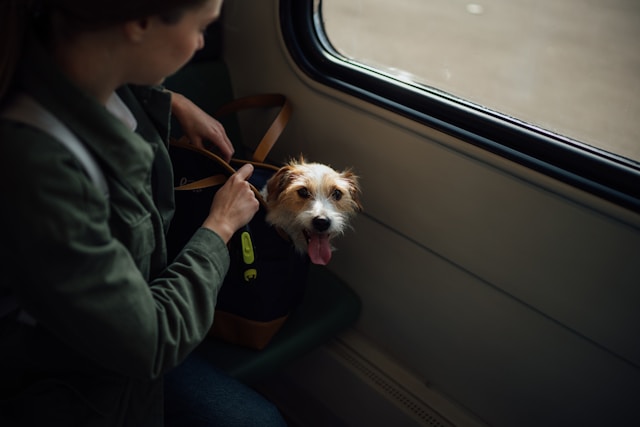Traveling with your furry friend can be a joyful experience whether you’re heading out on a road trip, flying across the country, or relocating. However, without the right planning, it can also become stressful and risky for both you and your pet. Understanding how to travel with pets safely ensures that your journey is smooth, comfortable, and secure.
From airline pet travel rules to car travel tips and pet-friendly lodging, this guide covers everything you need to know to make your next trip with your dog, cat, or other animal companion as stress-free as possible.
Why Pet Travel Safety Matters
Whether you’re a seasoned traveler or heading out on your first adventure with a pet, safety should always be your top priority. Pets are sensitive to new environments, and improper planning can lead to health issues, anxiety, or even injury.
With growing numbers of people choosing to travel with pets, there’s an increasing need for awareness about pet travel tips, legal requirements, and comfort measures that can help ensure a pleasant experience for everyone involved.
Pre-Travel Preparation
Visit the Vet
Before you travel, schedule a check-up with your veterinarian. Ensure your pet is healthy enough for the journey and is up to date on vaccinations. For international travel or flying with a pet, you may need a health certificate issued within a certain timeframe.
Get Proper Identification
A sturdy ID tag on your pet’s collar with your contact info is a must. Microchipping adds an extra layer of security in case your pet gets lost. Bring a recent photo of your pet in case you need to make a missing pet report.
Choose the Right Carrier or Crate
A high-quality, well-ventilated, and size-appropriate crate is crucial. It should allow your pet to stand, turn around, and lie down comfortably. If traveling by plane, make sure the crate is approved according to airline pet travel rules.
Pack a Pet Travel Kit
Here’s a quick pet travel checklist for the essentials:
-
Food and treats
-
Collapsible food/water bowls
-
Leash and harness
-
Waste bags and litter supplies
-
Medications and health records
-
Favorite toy or blanket for comfort
-
Cleaning wipes and paper towels
Car Travel With Pets
Traveling by car with pets is one of the most flexible and manageable options if done correctly.
Use Proper Restraints
Don’t let your pet roam freely in the car. Use pet seat belts, harnesses, or secure crates to protect them in case of sudden stops. An unsecured pet can become a distraction or even a projectile during an accident.
Plan for Breaks
Stop every couple of hours to allow your pet to stretch, hydrate, and relieve themselves. Make sure they’re leashed and in a secure area during breaks.
Keep the Car Cool
Never leave your pet alone in a parked vehicle, even on a mild day. Temperatures can quickly rise, leading to dangerous heatstroke.
Avoid Feeding Right Before Departure
Feed your pet a few hours before leaving to reduce the chance of motion sickness. Keep water available throughout the trip.
Flying With a Pet
Air travel requires special consideration. Understanding airline regulations and preparing in advance can make all the difference.
Know the Airline Pet Travel Rules
Each airline has specific policies for in-cabin and cargo travel. In-cabin is generally safer and preferred for small pets. Larger pets may have to travel in cargo, so choose a pet-friendly airline and avoid layovers or extreme temperatures when booking.
Prepare the Crate
Label the crate with your contact information and mark it “Live Animal.” Line the bottom with absorbent material, and attach a water container.
Crate Train in Advance
Help reduce your pet’s anxiety by allowing them to get comfortable in the travel crate ahead of time. Leave treats and toys inside to build a positive association.
Feeding and Hydration
Avoid feeding your pet 4–6 hours before the flight. Provide water up until travel time and possibly freeze a small amount to melt gradually during the trip.
Other Modes of Travel
Trains, Buses, and Ferries
Some train and bus lines allow pets, but always check policies in advance. Most require pets to be crated and well-behaved. Ferries may offer designated pet areas.
International Pet Travel
Traveling abroad with pets requires more preparation. You’ll need a pet passport or international health certificate, updated vaccines, and possibly proof of microchipping. Some countries also have quarantine requirements, so research ahead of time.
Staying Pet-Friendly on the Road
Book Pet-Friendly Lodging
Use apps and websites that specialize in pet-friendly travel to find accommodations that welcome pets. Always confirm weight or breed restrictions and any additional fees.
Respect Local Rules
Observe local leash laws and clean up after your pet. Keep noise to a minimum in hotels or shared spaces.
Stick to a Routine
Pets thrive on routine. Try to maintain regular feeding, walking, and sleep schedules while traveling.
Know Where to Get Help
Map out nearby veterinarians or emergency animal hospitals along your route or near your destination. Having this info handy can save precious time in an emergency.
Pet Travel Safety Checklist
Here’s a simple checklist to review before every trip:
-
Vet check-up complete
-
Vaccines and health certificates up to date
-
Pet ID tags and microchip
-
Travel crate or harness secured
-
Pet travel kit packed
-
Accommodations confirmed as pet-friendly
-
Route includes planned rest stops
-
Local emergency vet info saved
Final Thoughts
Learning how to travel with pets safely is essential if you want your trip to be enjoyable and stress-free. With the right preparation from understanding airline pet travel rules to securing your pet properly in the car you can avoid most common pitfalls and ensure your pet’s comfort and security throughout the journey.

